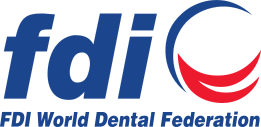Lasers in Dentistry
CONTEXT
Modern medicine and dentistry take a minimally invasive approach. Dentistry continuously searches for evidence-based, patient-friendly treatment through new solutions or therapeutic protocols. In the new era of modern dentistry, dental laser technology can be used to perform a wide variety of clinical procedures providing benefits to patients and clinicians. The ultimate goal is an effective treatment of oral diseases with minimum intervention and an improvement of practitioners’ knowledge and skills in the use of lasers. The use of lasers in dentistry with different wavelengths and devices may allow treatments with several advantages over conventional approaches. These include minimally invasive treatment approaches, bacterial reduction, control of bleeding due to improved tissue coagulation, increase in patient satisfaction regarding reduced intraoperative and postoperative pain and complications, and improvement of wound healing during photobiomodulation.
SCOPE
This policy statement aims to provide general information regarding the education, training and safety of using lasers in dental treatment.
DEFINITIONS
The term LASER is an acronym for “Light Amplification by Stimulated Emission of Radiation. Laser is a non-ionizing monochromatic (single wavelength) radiation, with a collimated (can be focused), coherent (non-diverse) light, with beneficial effects on hard and soft tissues. The biological effects depend on laser wavelength and the characteristics of the target tissue. Through the right selection of laser wavelength, lasers can be utilized on hard and soft tissues effectively with applications in many areas of dentistry.
PRINCIPLES
Laser therapy expands the treatment options in dentistry. The costs, benefits and risks must be assessed.
POLICY
FDI states that:
in relation to education and training:
- laser use requires proper training and education for the various clinical applications and types of lasers;
- dental students and dentists should undertake a course on clinical laser applications and complete an approved course on laser safety and use, prior to any clinical application (specific to the individual laser wavelength). This will help to ensure patient safety, the use of suitable laser sources, techniques and settings, and that both patient and operator are using appropriate safety equipment (eye protectors, warning signs and more);
- comprehensive laser education and training programmes should be provided by dental schools, academic post-graduate centres and dental laser societies in association with independent experts as a part of academic curricula.
In relation to patient safety:
- policies and regulations should be developed that support safety of working with laser devices in clinical facilities (in line with those in medical centres);
- each clinical facility using lasers should have a certified laser safety officer (LSO) who has the responsibility to administer and oversee the safety and effectiveness of laser operations;
- certification of an LSO, who can be a dentist, should be provided by accredited centres;
- large and multi-function facilities should consider the certification of multiple LSOs to ensure on site availability for scheduled use of lasers;
- laser use should be guided by evidence-based practices, proper training and a clear understanding of when their benefits outweigh the costs. Overuse or misuse without adequate training or evidence can lead to inappropriate applications, unnecessary expenses and potential harm to patients.
KEYWORDS
dentistry, lasers, laser-assisted therapy, laser safety
DISCLAIMER
The information in this Policy Statement was based on the best scientific evidence available at the time. It may be interpreted to reflect prevailing cultural sensitivities and socio-economic constraints.
REFERENCES:
- American Academy of Pediatric Dentistry. Policy on the use of lasers for pediatric dental patients. The Reference Manual of Pediatric Dentistry. Chicago, Ill.: American Academy of Pediatric Dentistry; 2022:131-4.
- ADA Guidelines for the Use of Lasers in Dentistry, Australian Dental Association 2011;
- ADA Policy Statement 6.29 – Laser Safety in Dentistry; Australian Dental Association 2019, adopted 2023
- WHO Lasers and optical radiation; EHC 23, 1982.
